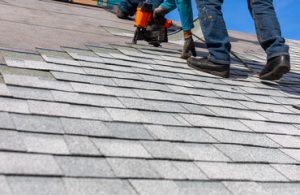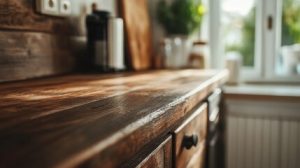Rodents are more than just a nuisance; they contaminate food, cause serious damage, and even cause fires by chewing through wires. Rodent infestations can be complicated and expensive to eradicate.
A professional humane wildlife removal specialist will conduct a thorough inspection to identify signs of rodents around a property. These include droppings, gnaw marks, rub marks, and strange noises. Click here at https://www.rodentretreattexas.com/ for more information.

Rodents like rats and mice can chew through electrical wires, causing fires. They can also contaminate food and spread diseases to people and pets. If you suspect rodents are on your property, it is important to hire a professional who understands the signs of a rat or mouse infestation and has experience with effective removal strategies.
Ask potential providers for references and reviews of their work. This information can provide valuable insights into a provider’s reputation and the quality of their services. Inquire about their methods and approach, as well as whether they have any humane options for rodent control.
Different rodents require different types of traps and bait. Using the wrong type of trap or bait can make the problem worse and force rodents to seek shelter in tiny spaces such as walls and corners.
If you notice unexplained noises or damage to your property, it may be time to call a rodent exterminator in your area. These signs can include gnawing marks, droppings, rub or dirt marks, and holes in your property’s structure or food packaging. Because rats and mice are nocturnal, you may hear scratching or scampering sounds in your walls and ceilings at night.
Equipment
Rodents can cause damage and spread diseases in homes and businesses. Their constant gnawing can damage structural materials, chew through electrical wiring, and leave behind droppings that can contaminate food supplies and spread disease-causing bacteria. They can also inadvertently introduce pests such as fleas and ticks into your home.
Rodent removal services can include trapping, baits, and exclusion work. Many companies use bait and traps that are safe for humans, pets, and children. But proper placement of traps and the right type of bait is critical. Mishandled traps can be dangerous, and improperly placed or used traps can result in rodents that are trapped but cannot escape, causing them to die in difficult-to-reach places such as walls and tiny corners.
When choosing a provider, request a detailed estimate that outlines the cost of services required to resolve your rodent infestation. Make sure that the estimate includes a breakdown of fees and costs, any additional charges, and any potential follow-up service visits or preventive measures that may be needed to ensure long-term success. Inquire about any guarantees or warranties offered by the company as well. These can provide additional peace of mind and assurance that the company is committed to delivering results. A guarantee or warranty can also indicate the company’s level of confidence in its work.
Humane Methods
Rodents cause extensive damage to homes, and they carry diseases and contaminate food. Their passionate love of chewing means they can gnaw through everything from electrical wiring to wood and steel pipes. Their scurrying and gnawing activities can also lead to fires, flooding, and structural problems. The damage they do in residential environments is costly and often leads to a decrease in property value. In commercial settings, rodents pose health code violations and can lead to a loss of reputation and even closure.
While Do-It-Yourselfers are tempted to tackle the problem themselves, it’s best left to professionals. Many DIY attempts to remove rodents from home environments go wrong, resulting in injuries to humans and animals. In addition, improper trap placement and bait can make a rodent problem worse.
Professional exterminators provide humane rodent removal services that are effective and long-lasting. They start by identifying potential entry points for rodents through thorough inspections of a home. Then, they seal off these points with durable materials to prevent rodents from re-entering.
They use different types of traps for different rodents, and they monitor trap locations to ensure that captured rats or mice are safely and quickly removed from a home. In addition, they can use eco-friendly repellents to reduce the rodent population without harming them or their environment. They can also recommend other steps to help prevent future infestations, including regular inspections and sanitary practices.
Warranty
Many professional rodent removal services offer a one- or two-year warranty for their work. A reliable provider should also provide detailed cost estimates and answer your questions about the pest removal process. They should carry insurance to cover any damage that may occur during the treatment process and be willing to provide references from previous customers.
Rodents are among the most destructive and dangerous of household pests, inflicting serious damage to structures and posing a health risk to humans and pets. They inadvertently contaminate food storage areas and spread diseases such as Hantavirus and Lyme disease to people and pets. The constant gnawing and burrowing of rats and mice can also cause electrical damage and create holes in walls, attics, and foundations.
Unlike traps and poisons, professional pest control techniques prevent rodents from entering homes by blocking entry points with rodent-proof materials. This knitted, stainless steel product combines strength with flexibility to effectively seal potential pest entry points. Professionals also use rodent-proof granules and sprays to deter rodents from creating nests in attics and crawl spaces.
The average cost of mouse or rat extermination services ranges from $150 to $600, depending on the type of rodent and size of the infestation. An inspection fee typically goes toward the overall bill, while additional services such as monitoring and removing dead rodents can increase the total price.

